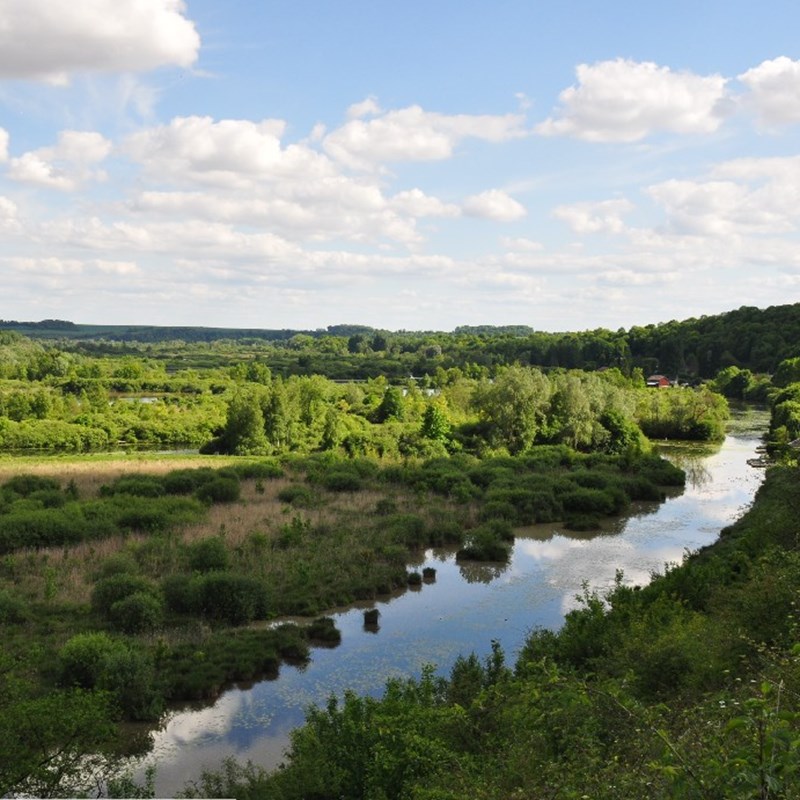How is a fen formed ?
When the soil is water-logged for over six months a year, it prevents dead vegetation from being totally decomposed because of a lack of oxygen. Oxygen is a vital element for developing micro-organisms in the soil.
A build up of organic matter that is scarcely or not at all decomposed gives rise to peat.
Peat is a carbon-rich material found in peatland soils. It contains 30 to 90 % of organic matter.
Non-peaty soil is made up of minerals and organic materials, and ordinarily the organic part is not over 20%.
The large amount of carbon-rich matter gives peat its characteristic dark colour.
But the colour of peat also varies according to the level of decomposition of plant fibres, which may be more or less preserved. This gives rise to variations in colour ranging from dark to light brown.
When the fibres are scarcely decomposed, we can easily identify the plants they come from.
Peat soils are estimated to grow on average by 0.2 to 1.6 mm a year, when one centimetre of fresh organic matter is added.
Not just peat...
Peat is not the only element in fens. There is also specific vegetation that forms an integral part of it and conditions its development. The ecological conditions prevailing in fens are very specific. Starting with the water in the soil which thwarts natural development, but also the relative few nutrients (we describe them as "oligotrophic" environments). There is little new matter from outside and only minimal renewal of organic matter through decomposition. The plants living in fens have adapted to their environment. Most of them are "specialists" and cannot be found elsewhere.They are called "turficolous" plants.
The plants most characteristic of fens are mosses, grasses, sedges and small rushes that form a carpet, a few decimetres thick. The vegetation, with large grasses and large sedges ("helophytes") predominating, sometimes also forms dense layers over one metre high in fens with the richest nutrients. Aquatic plants in ponds, some trees and bushes are also sometimes elements of fen vegetation. Leaves, stalks and roots from these plants go to make up peat.
There is a wide range of mires. There are mires in all latitudes (from polar to tropical regions), in different climates, different topographical contexts (mountains, slopes, lakes, valleys, etc.), with water of varying quality, composition and origin (acidic or alkaline, rich or poor in nutrients, rain water or water from the water table), etc.


